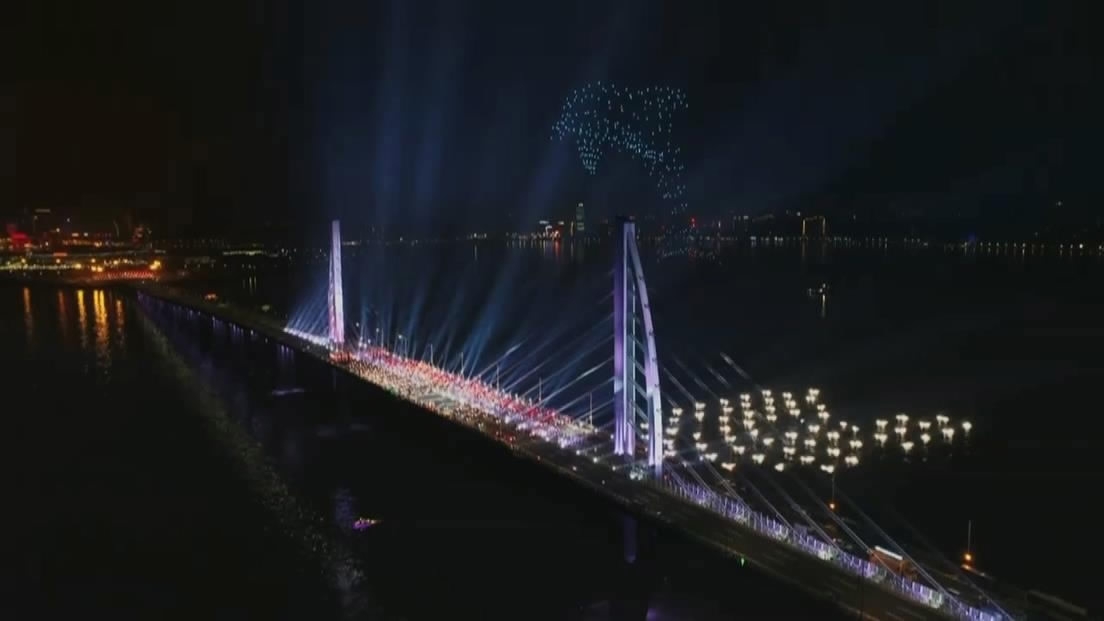
Tech & Sci
08:19, 17-Feb-2018
Drones, self-driving vehicles shown off at CCTV's New Year gala
By Guo Meiping, Gong Zhe

There might have been more cutting edge technology than you realized in Thursday's national gala for China's Year of the Dog, as self-driving vehicles became a standalone segment of the show.
Let's take a look at this and the companies behind the technologies.
The stage: Hong Kong-Zhuhai-Macao Bridge
The unique stage for the Zhuhai sub-venue was the Hong Kong-Zhuhai-Macao Bridge, which is the world's longest over-sea bridge, and, with a length of 55 kilometers, the largest steel-structure bridge.
Construction of the bridge started in 2009. Engineers used the world's largest floating crane to build the undersea tunnel and artificial islands. It has since broken several world records, including those for length, depth and steel usage.

Gif via CCTV
Gif via CCTV
The mega bridge is a dual three-lane highway. Once operational, it will cut down driving time between the three cities, from the current three hours to a mere 30 minutes.
Surrounded by unmanned cars, ships, and drones, the Hong Kong-Zhuhai-Macao Bridge shined on Chinese New Year’s Eve as the most "cutting-edge stage" of the gala.
The show: Local self-driving tech
A total of 300 drones formed a dolphin that jumped through the bridge. They were made and controlled by ZEROTECH from Beijing and HighGreat from Shenzhen, and had the highest altitude of anything in the show.
China is a world-leading country in drone production and research, with DJI taking a majority of the drone sales in many countries across the globe.
The self-driving vehicles running on the bridge were powered by Baidu's Apollo technology and included new-energy cars, buses and road-cleaning machines.

Gif via CCTV
Gif via CCTV
Led by a 7.5-meter-long Unmanned Surface Vessel (USV), the group of 80 1.6-meter long autonomous survey boats made by Oceanalph from Zhuhai created a streak of light on the water as they passed under the Hong Kong-Zhuhai-Macao Bridge.
Coordinating 81 unmanned boats at once was a big challenge for the Oceanalph team as the boats needed to complete all the formations without colliding while travelling through choppy waters.
The company used both public and private networks for communicating between the boats. A 4G network chip was attached to each boat, allowing the two networks to synchronize with each other.
1984km

SITEMAP
Copyright © 2018 CGTN. Beijing ICP prepared NO.16065310-3
Copyright © 2018 CGTN. Beijing ICP prepared NO.16065310-3